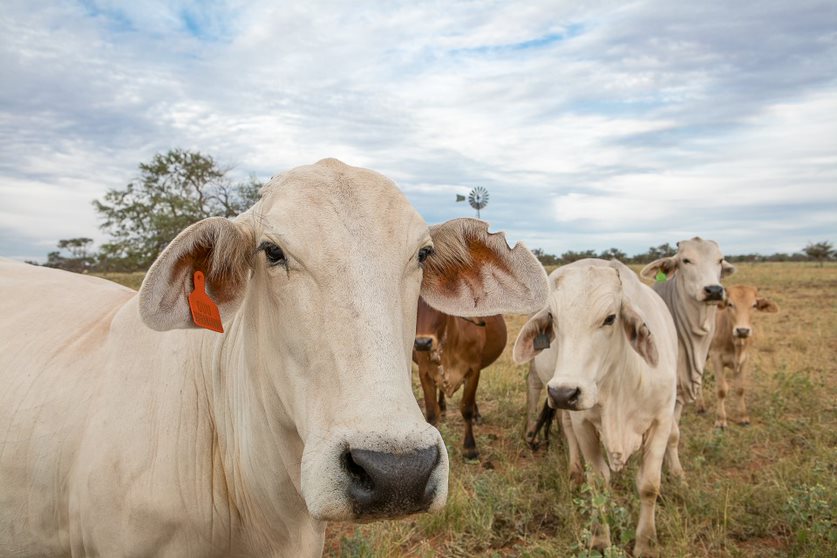Pastoralism
Overview
Pastoralism is more than just an industry to the people of the Gascoyne; it is a way of life that reflects the rugged outback spirit of the region. The introduction of sheep to the Gascoyne in 1876 sowed the seeds of an industry that would drive the development of the region well into the twentieth century. Raising sheep was so successful that the Gascoyne became one of the State’s largest wool producing regions.
Since the 1990s, the focus for Gascoyne pastoralists has been cattle, which is now the mainstay of the 67 active pastoral stations in the Gascoyne and sheep production is less important. The average size of these pastoral properties is 125,627 hectares. Livestock are raised largely on natural pasture and are watered through a variety of sources including artesian bores, permanent water holes, windmills and dams.
The move to livestock production in the Gascoyne mirrors industry advice on the most profitable way forward which considers the beef, sheep meat and livestock export industries to have the greatest economic development potential.
Live export is important for the viability of rangeland businesses. The main ports for livestock disposal from the Gascoyne rangelands are Fremantle, Port Hedland, Broome and Wyndham. Geraldton, 480km south of Carnarvon, currently hosts the closest facility for slaughter.

Cattle at Doorawarrah Station, image courtesy of Doorawarrah Station
Livestock disposals
The majority of livestock disposals from the Gascoyne are cattle, goats and sheep. Pastoralists in the region dispose of their livestock in response to international demand, competitiveness of the Australian dollar and seasonal conditions. Australian cattle exports are projected to increase, as demand continues to strengthen.
Comparative advantages
The pastoral industry in the Gascoyne has significant advantages over similar production in other North West regions in its access to both internal and external markets as it is only a day’s drive from the Muchea Livestock Centre and has access to livestock exporting ports at Fremantle and Port Hedland. In addition, it has little of the pest problems that limit movement southwards such as ticks and buffalo flies and none of the stock diseases that affect the condition of cattle and profitability.
The Gascoyne is close to the south west agriculture area and many pastoralists chose to purchase smaller farming properties to fatten stock using their pastoral properties as breeder units, establishing a supply chain that value adds to young pastoral stock resulting in a quality product.
Sustainability
Declining vegetation condition and cover along with top soil loss are continuing to affect landscape productivity. Agricultural drought months are projected to increase by up to 20% over most of Australia by 2030.
Regenerative agriculture, and in particular landscape rehydration, is a key focus for the Gascoyne pastoral region. Key principals include slowing rainfall runoff, increasing water infiltration into the soil, increasing vegetation cover and density and reinstating natural hydrology patterns.
Pastoral industry by 2050
The vision for the Gascoyne pastoral industry by 2050 is to achieve world class stewardship and land management. The aim is for breeder to feeder production with a target herd size of 200,000 head.
The beef industry will be dry season-proofed due to an extensive mosaic of 50–100 hectare on-property fodder farms drawing from the artesian basin and producing 1500–3000 tonnes of quality fodder each, which can support 3000–4000 head of cattle for up to four months at a time. The use of spatial technology and remote sensing will deliver fingertip control of livestock from genetic management to weight control, feed and water management, and highly sophisticated mustering systems.
Gascoyne pastoralists will partner with managed alliances throughout the Rangelands to coordinate the optimal use of feed, and will collaborate with the Mid West agricultural areas when appropriate.
The cattle industry could be centred around a new abattoir located close to Carnarvon for power, water and labour access. A major driver for the abattoir’s development would be the cost of livestock transport; with an advantage of nearly $.50c/kg there is significant incentive to add value at the local level. Cattle supply to the local works would need to reach around 70,000–75,000 head per year and with improvements in productivity and sourcing from the southern Pilbara region, there would be ample supply to meet this demand.
There could be an opportunity to establish a nearby feedlot of up to 15,000 head to maintain supply during summer and the grain and fodder for this could be produced at nearby pastoral operations south of Carnarvon.
Alternative meat products from goats and camels could be available, but only after the abattoir system was bedded down and able to add value to the process.